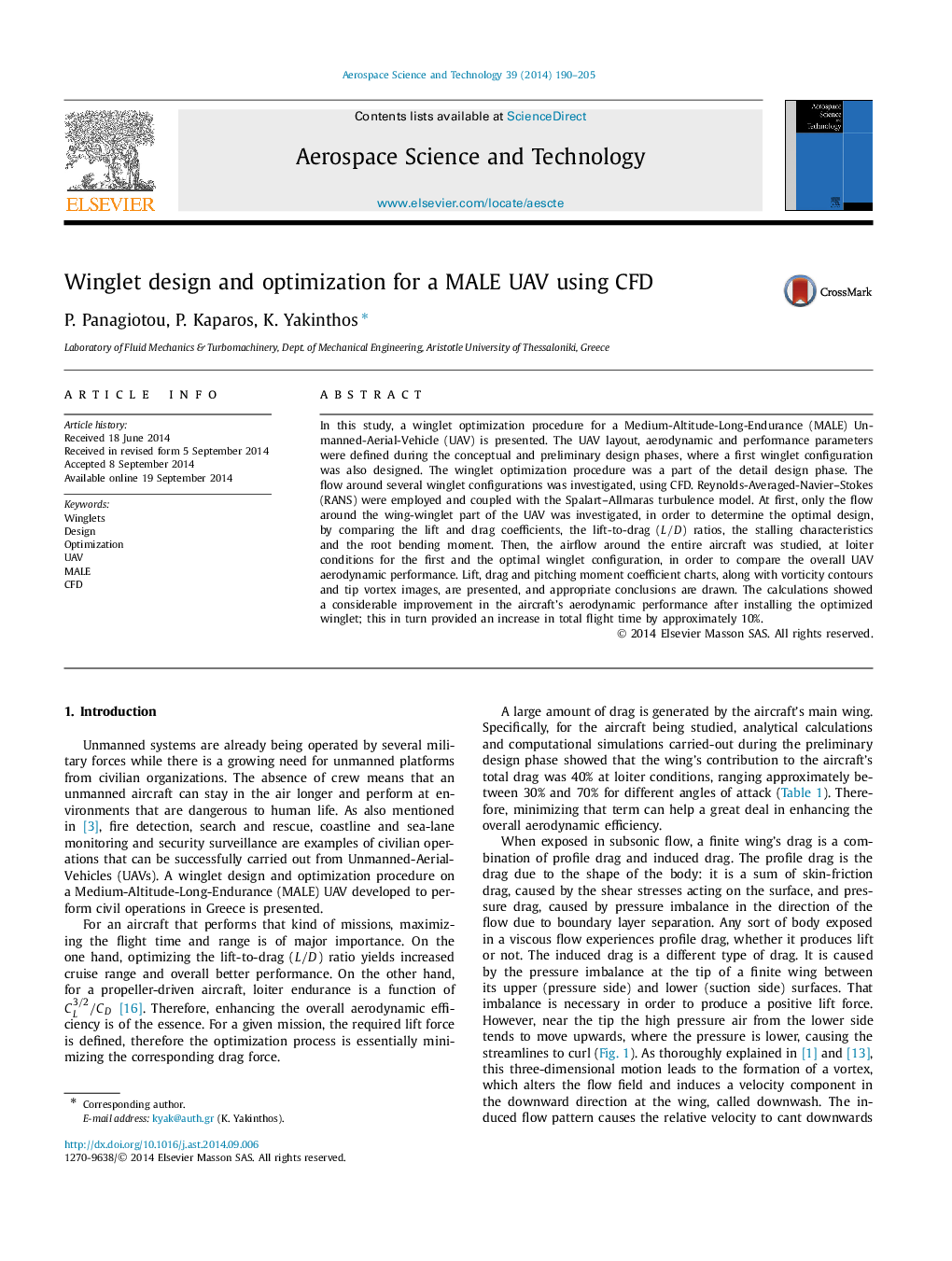| Article ID | Journal | Published Year | Pages | File Type |
|---|---|---|---|---|
| 1717971 | Aerospace Science and Technology | 2014 | 16 Pages |
In this study, a winglet optimization procedure for a Medium-Altitude-Long-Endurance (MALE) Unmanned-Aerial-Vehicle (UAV) is presented. The UAV layout, aerodynamic and performance parameters were defined during the conceptual and preliminary design phases, where a first winglet configuration was also designed. The winglet optimization procedure was a part of the detail design phase. The flow around several winglet configurations was investigated, using CFD. Reynolds-Averaged-Navier–Stokes (RANS) were employed and coupled with the Spalart–Allmaras turbulence model. At first, only the flow around the wing-winglet part of the UAV was investigated, in order to determine the optimal design, by comparing the lift and drag coefficients, the lift-to-drag (L/DL/D) ratios, the stalling characteristics and the root bending moment. Then, the airflow around the entire aircraft was studied, at loiter conditions for the first and the optimal winglet configuration, in order to compare the overall UAV aerodynamic performance. Lift, drag and pitching moment coefficient charts, along with vorticity contours and tip vortex images, are presented, and appropriate conclusions are drawn. The calculations showed a considerable improvement in the aircraft's aerodynamic performance after installing the optimized winglet; this in turn provided an increase in total flight time by approximately 10%.
